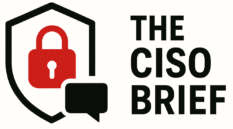Essential Insights
-
Fog Ransomware’s Unique Tools: Fog ransomware utilizes an unusual toolkit, including open-source pentesting tools and Syteca, a legitimate employee monitoring software that captures keystrokes and screen activity, enabling attackers to gather sensitive information undetected.
-
Attack Methodology: Initially observed in May 2022, Fog hackers exploit compromised VPN credentials for network access, use "pass-the-hash" techniques for admin privileges, and employ vulnerabilities in Veeam Backup and SonicWall SSL VPN servers to execute attacks.
-
Discovery and Analysis: Recent investigations by Symantec and Carbon Black revealed new attack tools during a financial sector incident in Asia, highlighting software like GC2 for command-and-control operations and Stowaway for covert communications, which signify a departure from typical ransomware tactics.
- Mitigation Insights: The atypical toolset and strategies used by Fog ransomware can help evade detection, prompting researchers to provide indicators of compromise to guide organizations in enhancing their security measures against such sophisticated threats.
Problem Explained
The Fog ransomware attack, first identified in May of last year, targeted a financial institution in Asia through a sophisticated, multifaceted toolset that included open-source pentesting utilities and the legitimate employee monitoring software Syteca. By exploiting compromised VPN credentials, the threat actors were able to infiltrate the network, deploy “pass-the-hash” techniques to elevate their privileges, and subsequently disable critical security measures like Windows Defender before encrypting sensitive data, including virtual machines. Noteworthy in this incident was the deployment of various unconventional tools such as Stowaway, a covert communication proxy, and GC2, a post-exploitation backdoor previously associated with the APT41 group.
Symantec and the Carbon Black Threat Hunter team reported these findings, emphasizing the atypical nature of the tools utilized—particularly the use of Syteca, which allows the attackers to surreptitiously capture user credentials. This arsenal, including additional utilities like Adapt2x C2 and Process Watchdog, underscores the evolving landscape of cyber threats. Researchers at Symantec remarked that such unorthodox methods not only facilitate the attack but also enhance the perpetrators’ ability to evade detection, thereby posing significant challenges to organizations striving to safeguard their digital environments.
Potential Risks
The emergence of Fog ransomware, utilizing an atypical amalgamation of tools such as Syteca (a legitimate employee monitoring software) and open-source pentesting utilities, presents profound risks to businesses, users, and organizations by enabling unprecedented stealth in cyber intrusions. This unusual toolset not only subverts conventional security measures but also amplifies the likelihood of data breaches through methods like credential harvesting and lateral movement within compromised networks. As these attacks leverage known vulnerabilities in widely utilized systems, such as Veeam Backup & Replication and SonicWall SSL VPN, organizations that are unprepared or fail to recognize these novel tactics become susceptible to similar infiltration incidents. The ripple effect of such intrusions can culminate in significant operational disruptions, financial losses, and erosion of customer trust, spiraling into a broader crisis as interconnected businesses suffer the ramifications of compromised supply chains and compromised data integrity. Therefore, the proliferation of these sophisticated ransomware techniques necessitates an urgent reassessment of cybersecurity protocols across all sectors to mitigate the cascading risks that could ensue.
Fix & Mitigation
Timely intervention is crucial in responding to the complexities introduced by the Fog ransomware attack, which ingeniously employs a bizarre amalgamation of legitimate and open-source tools to penetrate systems.
Mitigation Steps
- Network Segmentation
- Regular Backups
- User Education
- Intrusion Detection Systems
- Patch Management
- Access Controls
- Incident Response Plan
- Threat Intelligence Integration
- Security Audits
NIST CSF Summary
The NIST Cybersecurity Framework (CSF) emphasizes a proactive stance on identifying, protecting, detecting, responding, and recovering from cyber incidents. For specific details, refer to NIST SP 800-53, which provides comprehensive guidelines on security and privacy controls tailored for federal information systems and organizations.
Advance Your Cyber Knowledge
Explore career growth and education via Careers & Learning, or dive into Compliance essentials.
Explore engineering-led approaches to digital security at IEEE Cybersecurity.
Disclaimer: The information provided may not always be accurate or up to date. Please do your own research, as the cybersecurity landscape evolves rapidly. Intended for secondary references purposes only.
Cyberattacks-V1

